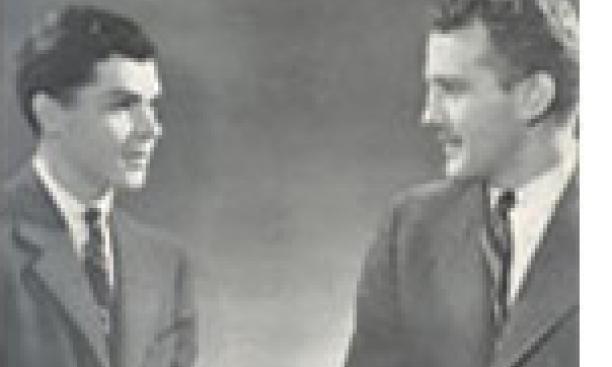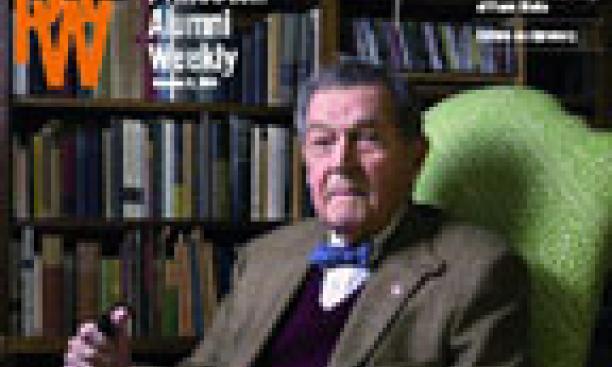
Remembering Robert Goheen ’40 *48


President emeritus Robert Goheen ’40 *48, whose association with Princeton spanned more than 70 years, died March 31 at age 88. The University's president from 1957 to 1972, Goheen guided Princeton through a transformative period, captured in Merrell Noden ’78's 2006 PAW feature, "A life at Princeton," and outlined in this week's obituaries from The New York Times, the Associated Press, and others. He led the University's move to coeducation in 1969, the recruitment of its first African-American professors and administrators as well as the first female full professor, a diversification the student body, and a vast physical expansion that included the construction of 25 campus buildings.
But generations of alumni also will remember Goheen from personal interactions in the classroom, where he was a distinguished student and later a professor classics; in service to his country, as a soldier in World War II and, after his presidency, as the U.S. ambassador to India; in his time as a University leader and campus peacemaker in the turbulent Vietnam War era (he expressed his thoughts eloquently in his 1970 Baccalaureate Address); or in retirement, as an active alumnus who communed with old friends at Reunions.
In 2006, PAW online columnist Gregg Lange ’70 recalled that "students comfortably referred to [Goheen] as 'Bogo,' while freely admitting he was as bright a person as they had ever met." Stan Pieringer ’70, who covered Goheen for The Daily Princetonian during a time of great dissent on college campuses, summarized one view of Goheen's term in a remembrance published this week: "Elegance of thought, moral courage, openness to all viewpoints, dedication to the life of the mind -- yes," Pieringer wrote. "But more than that -- always working for progress."
Goheen also had a sense of humor, evident during his presidency and after he retired. In 1997, a PAW story erroneously indicated that daughters of Robert Stockton, Class of 1813, had attended Princeton. Goheen, in a letter to the editor, quipped, "Too bad that precedent took so many years to materialize!"
When questioned about his legacy, Goheen was modest. He told archivist Daniel Linke, who led the Goheen oral history project at Mudd Library: "I was able to start a process of change at the University -- creative change -- which has been carried forward by each one of my successors. I don't know if that's a legacy or not, but anyhow it's very gratifying to see that the University's not stopped."
To share your stories and memories of Robert Goheen ’40 *48, e-mail PAW at paw@princeton.edu.
More Goheen links:
The University's In Memoriam blog
A video from the Goheen Oral History Project
The Daily Princetonian's memorial section
Professor Stan Katz remembers Goheen and Professor Robert Fagels, who also died last week
Photos, from left: Goheen appeared on PAW's cover several times, including in 1940, when he was awarded the Pyne Prize with classmate J.H. Worth; in 1957, at his inauguration as Princeton's president; and in 2006, 70 years after he arrived on campus as a freshman.
Programming note: Spotlight on health care
The April 15 edition of PBS' Frontline will feature reporter T.R. Reid ’66, author of the forthcoming book Quest for a Cure, and economist Uwe Reinhardt, the James Madison Professor of Political Economy at Princeton. The show will look at health care systems in other industrialized democracies, including England, France, Germany, Japan, and Switzerland, and ask what the United States can learn from them. The answer, Reid writes: "a lot."
PAW Web Exclusive: Gregg Lange ’70's "Rally ’Round the Cannon"
The fight of the century
While you were devouring in meticulous detail the colorful, beautifully illustrated booklet on the current campus development plan that you received with your issue of PAW in January - and which magically coincides with the Aspire capital campaign - you may have realized that there's an assumption that is literally central to the concept.
The Current Big Glossy Planning Idea is that Frist Campus Center is anointed as the center of the campus. Distances are measured from there, presumably everybody knows where it is, you can meet other folks there without fuss, there's expensive pizza, it providentially has the word "center" right in it. In fact, it's such a natural that Woodrow Wilson 1879 figured it out a hundred years ago. ... Click here to read more
